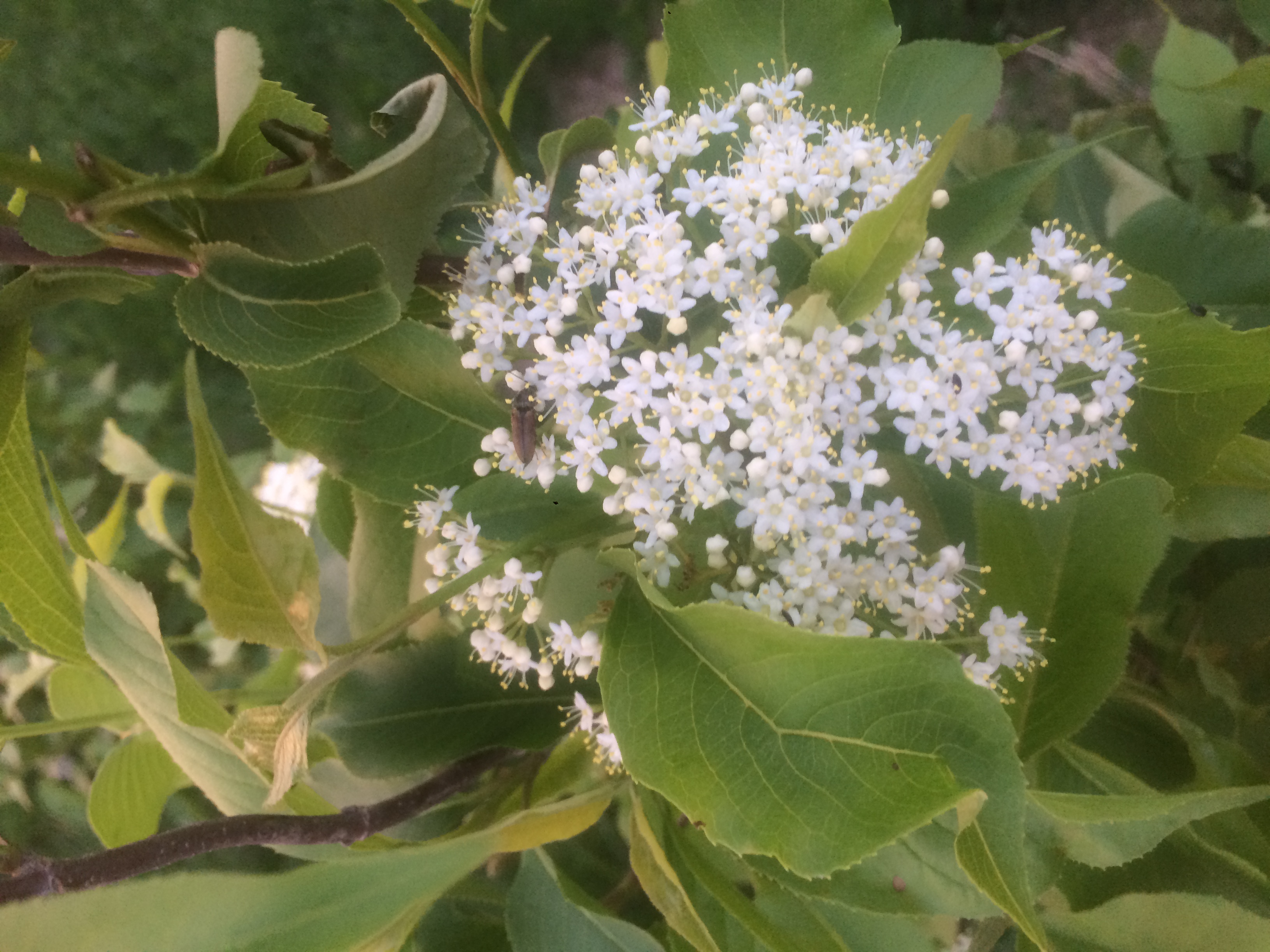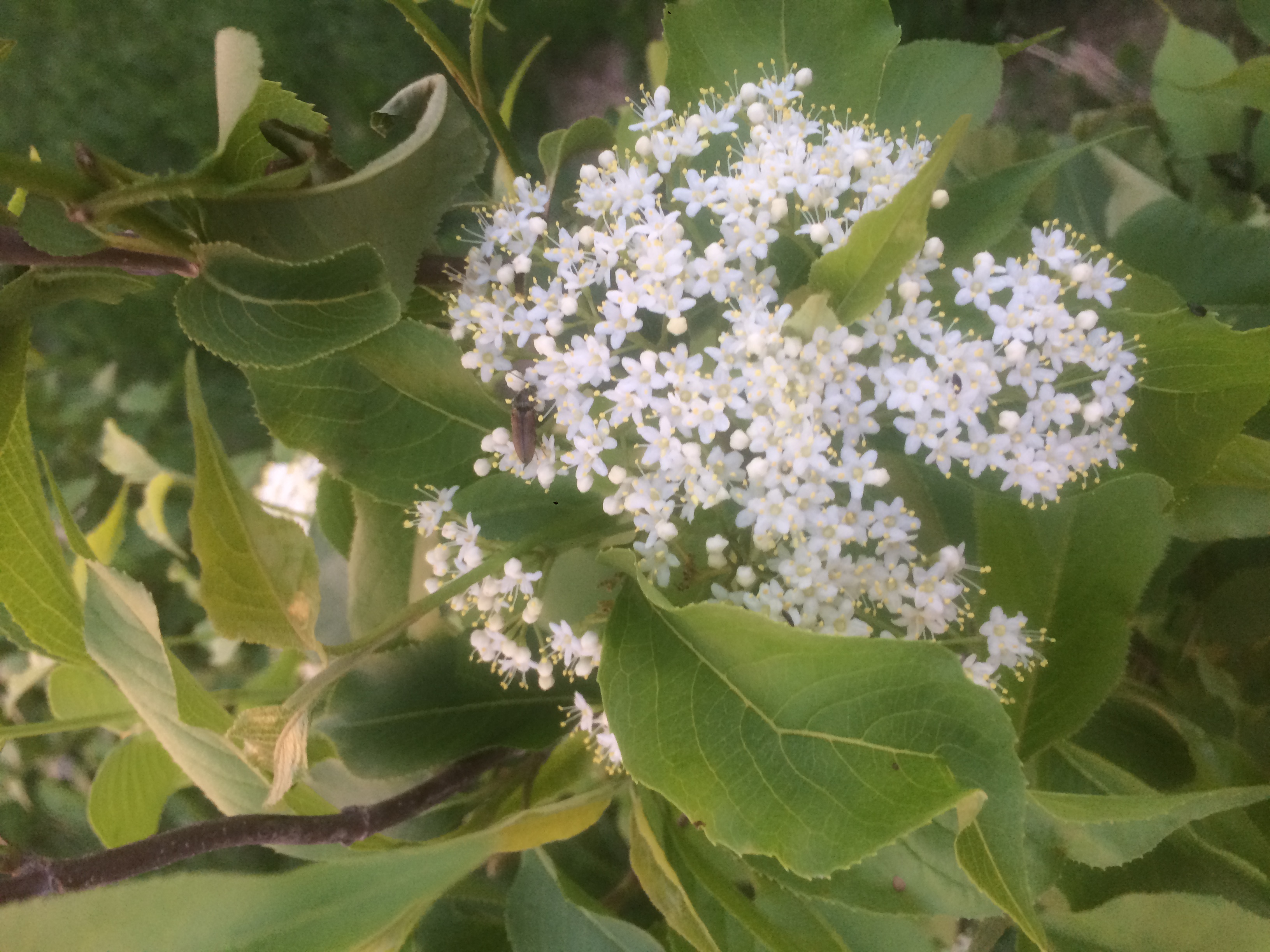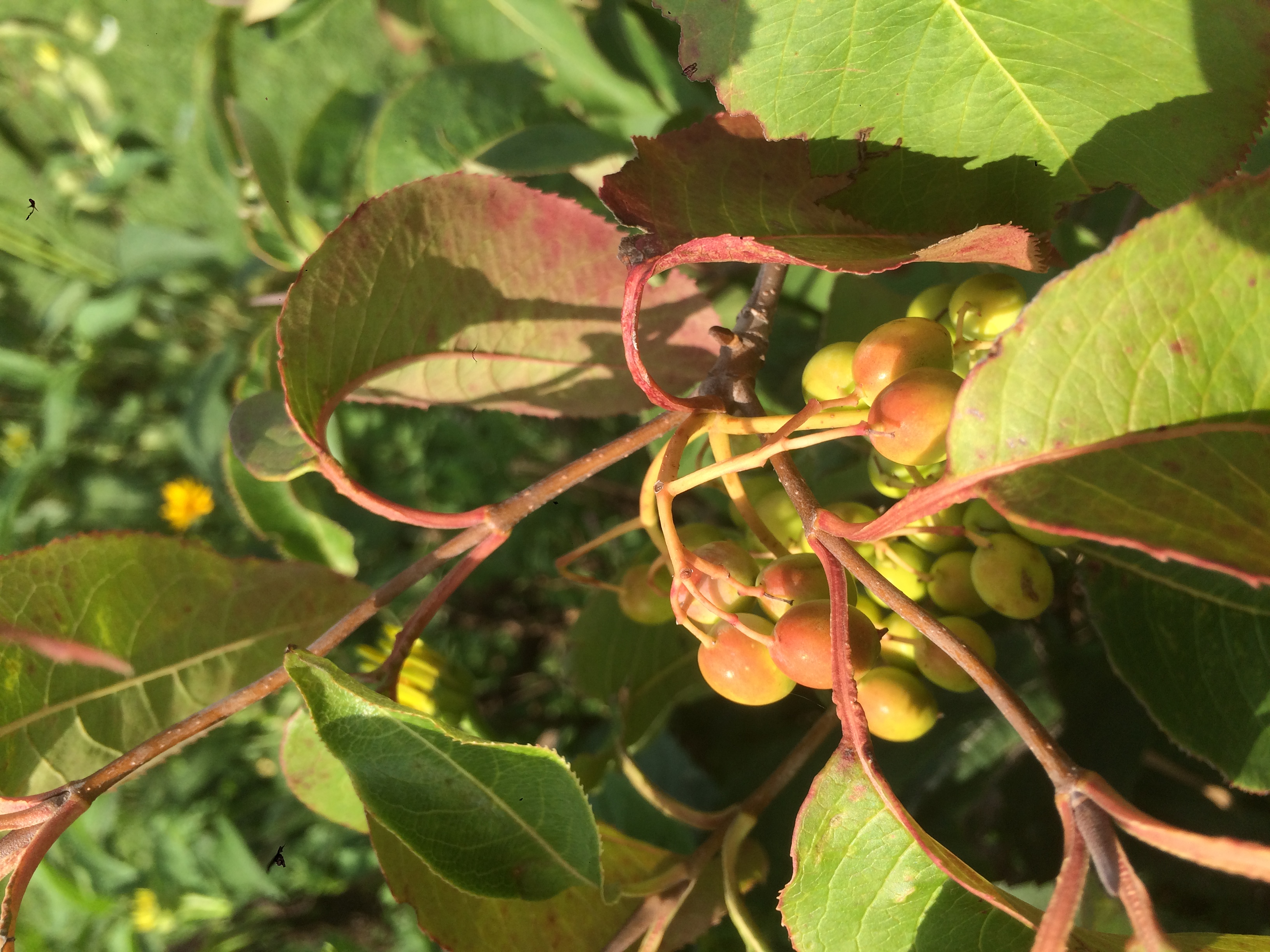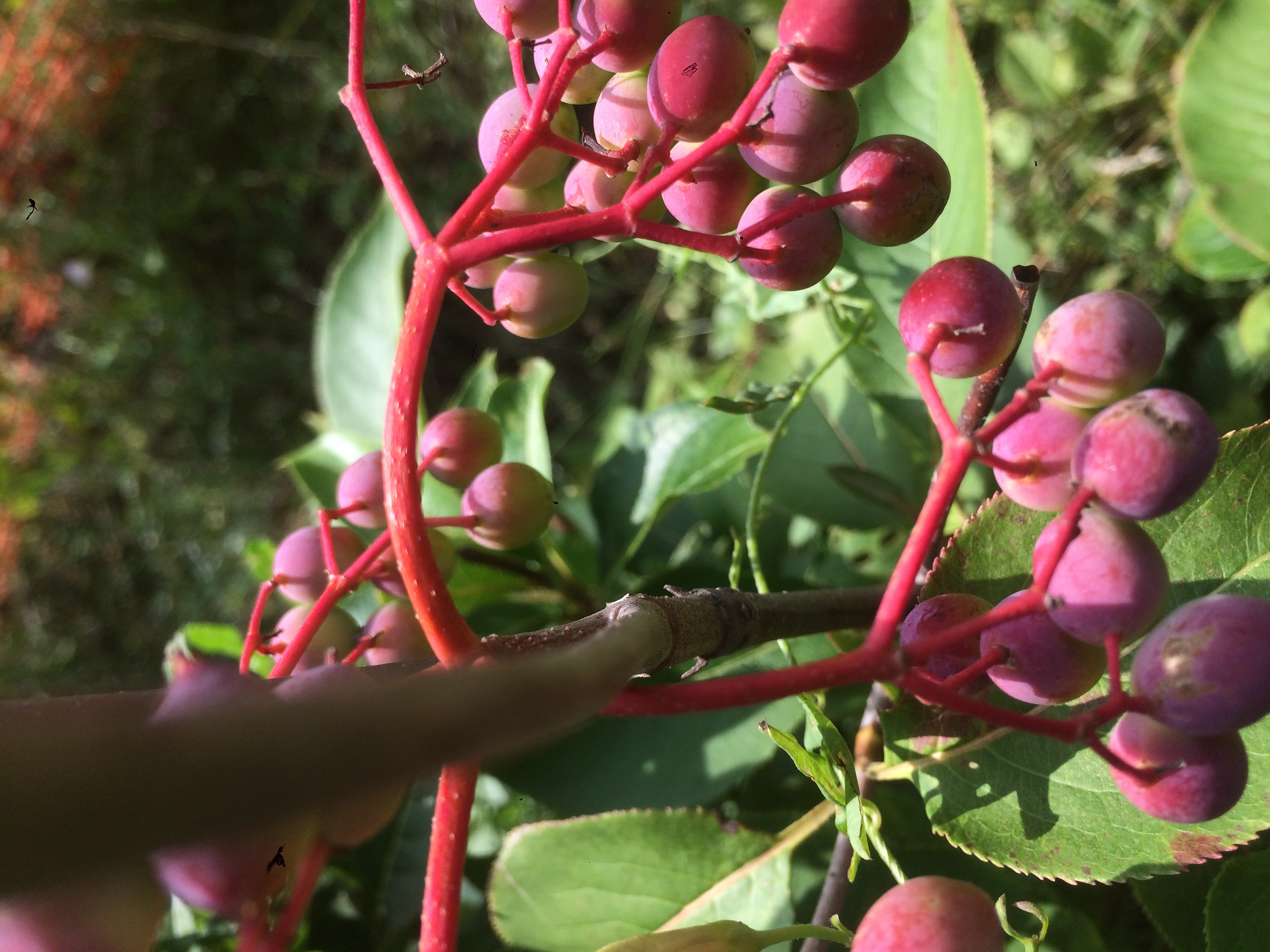Back to September 2018 Newsletter
Nannyberry for Pollinators

Kim Fellows
This month we are showcasing a native shrub that benefits some of our native pollinators: Viburnum lentago. We are talking about nannyberry, also known as sheepberry or sweet viburnum, which is part of the honeysuckle family (Caprifoliaceae).
According to many online references, the plant is so-named because apparently nanny goats enjoy eating them more than the billy goats! Unfortunately, I could not track down an original reference that elaborated on this possible situation; instead, I found a reference that cites the plant is so-named because its fruit — berries — resemble the droppings of a nanny goat!
Nannyberry shrubs typically bloom in May, offering white clusters of small flowers, which attract a variety of insects, including sweat and mining bees. As the flowers are pollinated and grow into fruit, the initially green berries typically mature to yellow, pink, red, then blue-purple or black. One forager describes the taste of the nannyberry as “hints of banana, prunes, raisins and even a slight "holiday spice," all with a distinctive and unique Nannyberry flavor.” The same forager also points out that the berry is ripe when it looks overripe, wrinkling like a raisin. The fruits can be eaten raw when freshly picked, or cooked into jams, jellies and puddings. Shared with wildlife, the fruits are enjoyed by birds, chipmunks and squirrels.

White flower clusters of the nannyberry shrub

Nannyberry shrub in the pollinator fedge in July

Maturing nannyberries in August
Nannyberry will grow in part shade to full sun, as it is naturally found in the understory or along the edge of woodlands. It tolerates moist and less moist soils, growing three to eight metres tall, making them ideal as a screen or hedge, which is exactly where we have 10 specimens growing, in our pollinator fedge. The flowers are self-infertile, thus necessitating the presence of at least two or three shrubs to ensure fruiting. The leaves also provide a beautiful show in the autumn, turning a deep red.
**
Kim Fellows is Seeds of Diversity's Pollination Canada coordinator.
Not yet a member?
An annual membership to Seeds of Diversity gives you access to our seed exchange, seed grow-out programs, and our online news.

We depend on donations to do our work.

Thank you for your support!
